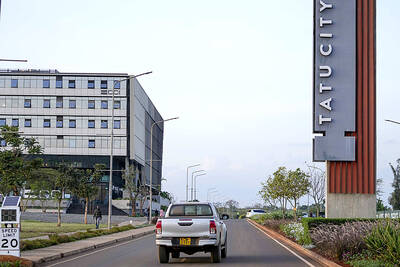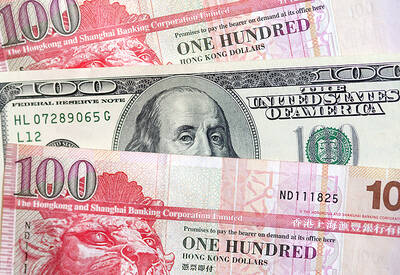Wistron Corp (緯創), the world’s third-biggest contract notebook maker, expects its notebook shipments to grow about 20 percent in the second half of the year from the first half, Wistron chairman Simon Lin (林憲銘) said yesterday.
Lin said that every product line except for TV assembly should be able to maintain 20 percent growth as forecast at the beginning of this year, but that TV shipments were likely to drop in the second half or remain at the same level as in the first half of the year.
Besides TVs and notebooks, Wistron also makes handheld devices, servers, liquid-crystal displays and desktop PCs.
Saying that last year was a challenging year for the company, with a drop in profits compared with 2010, Lin said this year had also brought some big challenges, including the escalating eurozone debt crisis and China’s declining economic growth.
The impact from the eurozone and China was especially evident in the first quarter, when orders across product lines and industries shrank, Lin said. However, he said he had seen some good signs in the industry’s recent development.
In the past year, the notebook industry was hard hit by the success of Apple Inc’s iPads, but now customers have gradually come to the realization that iPads cannot replace notebooks, Lin said, adding that tablets have created both a separate need and a separate market. The notebook market has begun to bounce back as the impact from tablets dies down, Lin said.
Microsoft’s Windows 8 operating system is also on the horizon and has helped boost the morale of the non-Apple camp, as well as market momentum, Lin said, adding that Wistron would step up investment in touch panels to cope with the trend.
Lin said he had seen orders coming in quickly and was therefore preparing increased capacity. He said he expected the notebook market to grow slowly, but stably in the future, and forecast that the company’s shipment of notebooks in the second half of the year would top that of the same period last year.
Wistron said it shipped a record 31.55 million units of notebooks last year.
According to the company’s financial statement, Winstron’s consolidated revenue last year reached NT$658.37 billion (US$22.04 billion), with operating income at NT$10.58 billion. The company’s net profit last year was NT$9.07 billion, with earnings per share of NT$4.36.
Shareholders yesterday approved the company’s plan to distribute a cash dividend of NT$2.20 and a stock dividend of NT$0.50 per common share or 5 percent.

To many, Tatu City on the outskirts of Nairobi looks like a success. The first city entirely built by a private company to be operational in east Africa, with about 25,000 people living and working there, it accounts for about two-thirds of all foreign investment in Kenya. Its low-tax status has attracted more than 100 businesses including Heineken, coffee brand Dormans, and the biggest call-center and cold-chain transport firms in the region. However, to some local politicians, Tatu City has looked more like a target for extortion. A parade of governors have demanded land worth millions of dollars in exchange

Hong Kong authorities ramped up sales of the local dollar as the greenback’s slide threatened the foreign-exchange peg. The Hong Kong Monetary Authority (HKMA) sold a record HK$60.5 billion (US$7.8 billion) of the city’s currency, according to an alert sent on its Bloomberg page yesterday in Asia, after it tested the upper end of its trading band. That added to the HK$56.1 billion of sales versus the greenback since Friday. The rapid intervention signals efforts from the city’s authorities to limit the local currency’s moves within its HK$7.75 to HK$7.85 per US dollar trading band. Heavy sales of the local dollar by

Taiwan Semiconductor Manufacturing Co’s (TSMC, 台積電) revenue jumped 48 percent last month, underscoring how electronics firms scrambled to acquire essential components before global tariffs took effect. The main chipmaker for Apple Inc and Nvidia Corp reported monthly sales of NT$349.6 billion (US$11.6 billion). That compares with the average analysts’ estimate for a 38 percent rise in second-quarter revenue. US President Donald Trump’s trade war is prompting economists to retool GDP forecasts worldwide, casting doubt over the outlook for everything from iPhone demand to computing and datacenter construction. However, TSMC — a barometer for global tech spending given its central role in the

An Indonesian animated movie is smashing regional box office records and could be set for wider success as it prepares to open beyond the Southeast Asian archipelago’s silver screens. Jumbo — a film based on the adventures of main character, Don, a large orphaned Indonesian boy facing bullying at school — last month became the highest-grossing Southeast Asian animated film, raking in more than US$8 million. Released at the end of March to coincide with the Eid holidays after the Islamic fasting month of Ramadan, the movie has hit 8 million ticket sales, the third-highest in Indonesian cinema history, Film